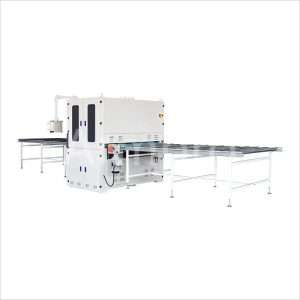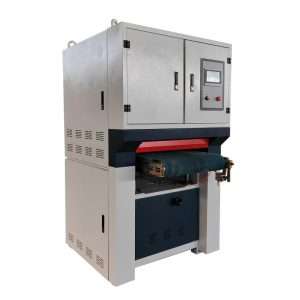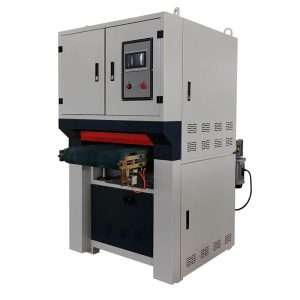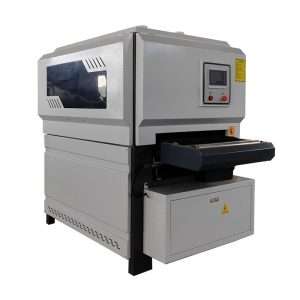How to accurately assess the quality of a pipe chamfering machine
In the manufacturing industry, precision is important and precision as simple as pipe chamfering can have a great influence on the quality and efficiency of other processes at work. Pipe chamfering machines are devices that are intended to produce beveled ends on pipes.
It is the basic equipment used in many fields such as construction, plumbing, automobile, and other major manufacturing units. A careful review of that equipment quality will ensure the highest possible levels of:
- Performance
- Durability
- Safety
Introduction
This guide provides a comprehensive procedure to assess chamfering machines of pipes with a particular emphasis on their construction quality, accuracy, ease of operation, and serviceability.
Pipe chamfering machines are used in industries for preparing pipe ends with bevels or chamfers. This needs to be done if you want high-quality, strong, smooth welding joints needed in a lot of cases. Several technological advancements have been made in the pipe chamfering machine sector to ensure a higher efficacy as well as an intricate production of pipes during welding and fabrication.
Brief Overview of the Pipe Chamfering Machine Industry
The integrity and outcome of building commercial and also oil & gas markets rely on making use of pipeline beveling equipment. These vary from partly automated to independent systems to satisfy the needs of firms having varied manufacturing amounts along with intricacy degrees. By enhancing functional procedures as well as task durations, they play a vital function in minimizing welding mistake prices and also setting up time.
Importance of Determining the Quality of a Pipe Chamfering Machine
There are many reasons it is important to review pipe chamfering equipment precisely:
- Precision and Consistency:
Dependable weld joints are attained making use of premium equipment which constantly uses smooth surfaces plus slant angles throughout a variety of pipeline products plus dimensions.
- Durability and Reliability:
Purchasing well-crafted equipment with lasting components will certainly settle over time via minimized upkeep requirements and also downtime.
- Safety and Compliance:
Adhering to all relevant guidelines and also guidelines, modern-day makers have safety and security functions to maintain drivers secure while running.
If firms make the effort to thoroughly think about every one of these elements they will certainly have the ability to acquire pipe-chamfering devices that are excellent for their procedures, increase performance, as well as maintain staff members secure.
1. Understanding Pipe Chamfering Machines
Machines made specifically for chamfering and beveling the ends of pipes are known as pipe chamfering machines. These machines are mostly used to smooth and precisely prepare the edges of pipe ends so that they can be threaded, welded, or connected in some other way. Not only does chamfering make installation easier, but it also strengthens and improves the joints, rendering them less likely to leak or fail structurally.
Different Types of Pipe Chamfering Machines
- Manual Pipe Chamfering Machines
Smaller-sized jobs, as well as minimal manufacturing amounts, are best fit for these by-hand run makers. Their mobility and user-friendliness make them ideal for use in real-world circumstances.
- CNC Pipe Chamfering Machines
Computer system mathematical control one of the most sophisticated chucking devices provides precise control. Their programmability and repeatability make them perfect for developing high-end, complicated applications.
- Semi-Automatic Pipe Chamfering Machines
Automated procedures are supplemented by human input in these machines. Once the pipe is placed, the machine will automatically carry out the chamfering operation. They provide an ideal combination of accuracy and user-friendliness. They supply an excellent mix of precision and also user-friendliness.
- Fully Automatic Pipe Chamfering Machines
These devices are automated and created for high-volume production with marginal individual involvement. High effectiveness plus precision are ensured by their capacity to refine several pipelines at the same time.
Key Components of a Pipe Chamfering Machine:
The machine is capable of being fitted with a wide variety of cutting tools, such as:
- milling cutters,
- grinding wheels
- abrasive discs
Additionally, certain chamfer machines are capable of being programmed with a computer numerical control (CNC) system, which enables the chamfering operation to be controlled with greater precision over the machine.
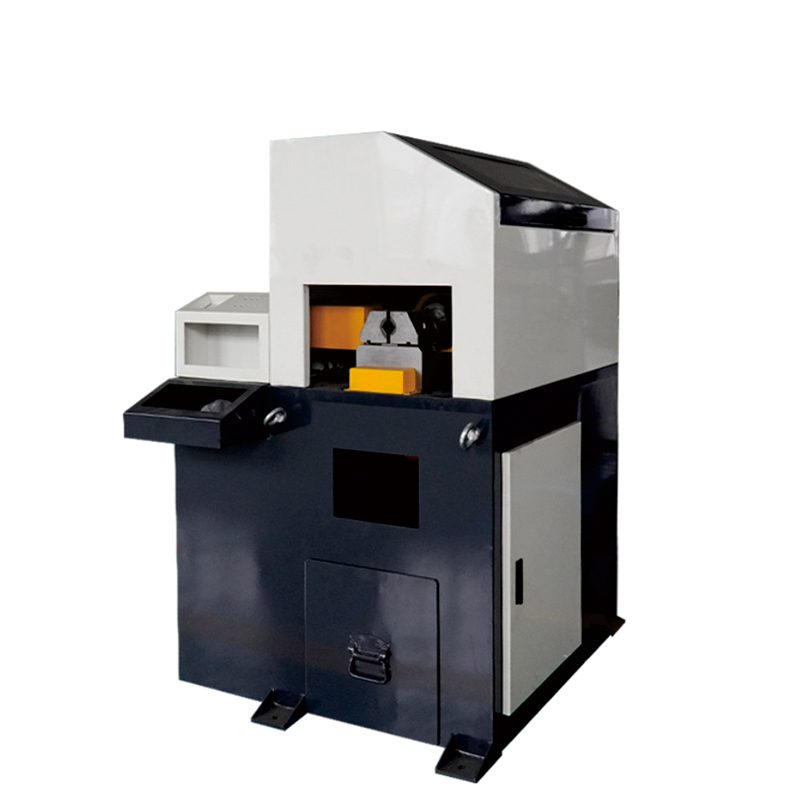
2. Factors Influencing the Quality of Pipe Chamfering Machines
The building and materials of a pipe chamfering machine determine its excellence. Machines built with high-quality materials, such as steel or aluminum alloys, last longer and are steadier. Ensuring long-term performance, the durable design increases chamfering precision and reliability.
- The speed of the chamfering machineand the quality of the chamfer produced during pipe processing.
- The effectiveness and efficiency of pipe chamfering machines are measured by how smoothly and cleanly they cut the pipe.
- The machine consistently produces smooth pipe ends and precise bevel angles, regardless of the material or size of the pipe.
- The capacity to adapt to various pipe sizes and perform chamfering without downtime is an example of operational flexibility.
- Power and resource efficiency lessen operational costs and ecological impacts, leading to energy efficiency.
Durability and Maintenance Requirements:
There should be only minimal maintenance required for a high-quality pipe chamfering machine:
- Cutting tools, clamping systems, and drive mechanisms that are resistant to wear have long lifespans.
- Reduced downtime can be achieved by easy access to critical components for inspections, lubrication, and repairs, which in turn facilitates ease of maintenance.
- Equipment designed to withstand heavy usage for an extended period is known as a service life.
Safety Features:
In industrial settings, pipe chamfering equipment must be safe to safeguard operators and meet with regulations:
- Mechanisms for Emergency Stopping:In the event of an emergency operation, shut down to prevent mishaps.
- Safety interlocks:Devices known as safety interlocks perform the function of ensuring that the correct operation of machinery is only possible once all safety regulations have been satisfied. This helps to prevent behaviors that could be hazardous or access that is not authorized.
- Covers and Guards for Safety:These covers and guards protect operators from potential risks and moving parts with which they may come into contact.
3. How to Accurately Assess the Quality of a Pipe Chamfering Machine
Step-by-step guide on evaluating the machine's performance
Step 1: Ensure the machine has clear instructions and simple calibration methods. Consistent performance requires calibration.
Step 2: run sample pipes through the machine to confirm uniform chamfer angles and clean, burr-free edges. To test chamfer dimensions and angles, precise measurement devices are needed.
Step 3: Calculate the time to chamfer a particular quantity of pipes. Equipment should meet your manufacturing needs without affecting product quality.
Step 4: Chamfer pipes to ensure size and quality uniformity. This ensures long-term performance.
How to inspect the machine's components?
- Setting and Build Quality:Check for durable materials like cast iron or heavy-duty steel in machine construction. The strong design reduces vibrations and improves precision.
- Heads and cutting tools: Use high-speed steel or carbide for durability. Keep them sharp and in good condition.
- Drive and Motor System:Ensure smooth, silent motor operation and power rating. A reliable motor must be strong and well-balanced.
- Verify Clamping Mechanism:Ensure safe and secure pipe retention. It must be easily adaptable for pipe diameters.
- Control system:Assess user interface usability. Chamfer size, feed rate, and speed should be easy to alter with the controls.
Understanding the machine's operation and efficiency
- Consistency:
For consistent performance, make sure that the chamfer quality is consistent throughout all of the pipes.
- Changeover Time:
Figure out how long it takes to swap out cutting tools or make machine adjustments for various pipe sizes and chamfer requirements.
- Operational Speed:
Verify if the machine's speed is sufficient for your production needs by testing it.
- Ease of Set-Up:
Clear instructions and an easy-to-follow setup procedure are essential.
Assessing the machine's safety features
- Safety Training:
Assess the accessibility of operator training programs and safety instructions. The machine should have obvious operational instructions and safety cautions marked on it.
- Sensors and Alarms:
Verify that there are sensors installed to prevent overloading and that there are alarms set up to notify you of machine problems.
- Emergency Stop Button:
Make sure that there is an emergency stop button that is easily accessible and completely functional, and that pressing it will promptly bring the process of slowing the machine to a halt.
- Protective Guards:
Always make sure that sufficient protection measures are encircling the areas where cutting is taking place. This will ensure that the operator is safe from debris and moving parts.
If you follow these methods to evaluate the quality and appropriateness of a pipe chamfering machine, you will be able to ensure that it is up to par in terms of its performance, longevity, and safety.

4. The Role of Pipe Chamfering in Various Industries
Use of Pipe Chamfering Machines in Different Industries
- Construction Industry
Chamfered pipes offer an exact fit for HVAC ducting and piping, enhancing system efficiency and reliability.
For quicker assembly and secure couplings, chamfered pipes are used in construction frameworks.
- Automotive Industry
For smooth automotive operation and emission management, chamfered edges are crucial for exhaust system components.
Chamfered pipes are used for secure couplings in high-pressure hydraulic systems to ensure efficiency and safety.
- Oil and Gas Industry:
Chamfering enhances joint integrity and simplifies welding by creating smooth and precise pipe ends. Thus, pipes survive longer and leak less.
Chamfered edges improve efficiency and save downtime in pipeline repairs.
- Manufacturing and Fabrication:
Chamfered pipes ensure precise and secure couplings, ensuring machine performance and durability.
Chamfering-enhanced pipe systems reduce manufacturing downtime and maintenance expenses.
- Plumbing and Water Supply:
Chamfered pipes ensure reliable and safe water supply systems by providing tight, leak-proof couplings.
By softening sharp angles, chamfering enhances system durability and reduces corrosion at pipe joints.
Industry Standards for Pipe Chamfering Machines
- ISO Standards:
- ISO 9001:
Consistently high-quality products are guaranteed by quality management systems.
- ISO 2768:
Consistent and precise machined parts, particularly those with chamfered edges, are subject to standard tolerances.
- ISO 9000 Family:
Provides a foundation for consistent production processes by covering quality management concepts and standards.
- ASME Standards:
- ASME B31.3:
To guarantee correct welding preparation, process piping standards outline specifications for pipe ends and chamfering.
- ASME B16.25:
Welding end specifications, including chamfering standards, for secure and durable welds.
- API Standards:
- API 1104:
Technical requirements for pipe welding and associated operations, including end preparation.
- API 5L:
Guidelines for line pipe, outlining dimensions and chamfering tolerances to guarantee the dependability and safety of pipelines.
- ASTM Standards:
- ASTM A53/A53M:
Codes for welded, seamless, zinc-coated, black-and hot-dipped, steel-pipe, and steel-steel chamfering.
- ASTM A106/A106M:
Standards for chamfering and other processing steps for high-temperature seamless carbon steel pipes.
- DIN Standards:
- DIN 2559:
Chamfering criteria and other standards for pipe end preparation are provided to assure consistency and reliability.
- DIN 1626:
Welded circular steel pipe specifications, including end fitting requirements for long-term reliability in assembly.
To guarantee accurate, safe, and dependable pipe connections, pipe chamfering is essential in many different sectors. When it comes to oil and gas, plumbing, automobiles, aircraft, building, and manufacturing, chamfering machines are a must-have for producing top-notch pipe ends. Producing chamfered pipes that conform to stringent quality and safety standards guarantees that the systems that utilize them will function efficiently and reliably. These standards include:
- ISO
- ASME
- API
- ASTM
- DIN
Conclusion
In conclusion, the choice between manual and automatic pipe chamfering machines significantly impacts operational efficiency, precision, quality, safety, and cost-effectiveness. Manual chamfering machines are cost-effective and suitable for small-scale or custom tasks. But they are labor-intensive and prone to inconsistencies due to human errors, making them less suitable for high-volume production. They also pose greater safety risks and can lead to operator’s fatigue.
On the other hand, automatic chamfering machines have higher initial investment and maintenance requirements. But they offer superior efficiency, precision, quality, and consistency, making them ideal for large-scale manufacturing environments. These machines enhance safety by reducing human interaction and can handle complex chamfering tasks with consistent quality.
Therefore, selecting the appropriate chamfering machine depends on the specific operational needs, production volume, and precision requirements that you require. Choosing the correct chamfering machine will influence operation productivity, product quality, and overall operational costs.
Don't forget to share this post!
Related Products
CONTACT US
Tell us your raw material and working details to get quotations within 24 hours.
WhatsApp Us: +86 159 27 555863

Want the best price & newest metal working machinery buying guide,tips and trends sent straightly to your box?Sign up for Armpro's monthly newsletter,we're free for your consultation and Offer you the most suitable working solutions!
The Buyer's Guide
- Tapping Machine: The Ultimate Buying Guide in 2024
- Electric Tapping Machines:the Ultimate Buying Guide in 2024
- Drilling Machine: The Ultimate Buying Guide in 2024
- Drilling milling Machine:The Ultimate Buying Guide in 2024
- CNC Tapping Machine :The Complete Buying Guide in 2024
- Pipe chafering Machine:The Complete Importing Guide in 2024
- Radial drilling Machine:The Complete Buying Guide in 2024
- Thread rolling Machine:The Complete Buying Guide In 2024
- Pillar Drilling Machine:The Ultimate Buying Guide in 2024



